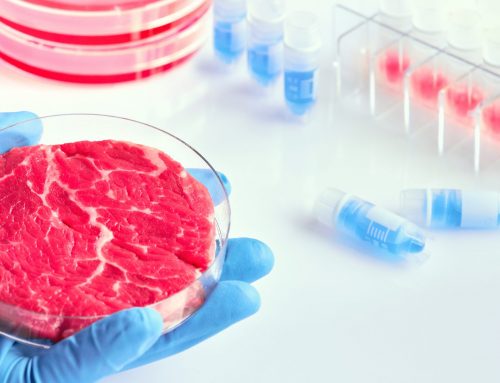In the past few years, Erdyn has realized over 15 assignments in the field of alternative protein sources for start-ups (Ynsect and Hari&Co for example), SMEs or large international companies (confidential names). To follow up on our previous news “Alternative proteins part 1: market trends”, we dedicated this article to the quantification of alternative proteins’ market segments.

- The plant protein market
Plants are a good source of proteins. Cereal and oilseeds are two major vegetable protein resources[1] but high protein contents can also be extracted from other legumes or leaves. The global plant-based protein market is a growing market worldwide. In 2018, its value has been estimated at an average of USD 9.6 billion with a CAGR of 6.8%. Its projected value in 2024 is estimated at USD 14.8 billion in 2024[2]. The plant-based protein market represents approximately 84% of the alternative food market.
The global functional protein market, including all protein sources, is registering a continued demand over the last few years. Out of a projected 2 280 kilo tons by 2022, the plant protein market will represent 1070 kilo tons[3], representing 46.9% of the market. The largest part of the market is represented by animal-based protein sources.
France stands out as one of the most dynamic European country in the plant-based protein field, together with Germany. It has a good industrial and scientific background and produces a large quantity of crops at the European level (specifically oilseeds such as colza and sunflower). Emerging companies such as Hari&Co also develop legume-based food product and help promoting the organic branch of French legumes. The development of co-ops such as La Chanvrière, which promote production and transformation of hemp seeds, is also a good driver of the market.
- The insect protein market
Edible insect market is a strongly growing market and is expected to overpass 1 $Bn by 2025 with a CAGR approaching 45%. The Asia-Pacific region represents a large part of this market, as this regional population has been consuming whole insect for a long time. Specifically, the insect protein market represents about 50 $M and is expected to reach 180 to 200 $M by 2023 with a CAGR of 23 to 27%[4].
The insect protein market is primarily driven by the growing demand for insect proteins in animal feed. For example, fish feed represents approx. 50% of the European animal feed made from insects, and is expected to raise to 75% by 2030[5]. Pet food is the second market for insect protein producers. However, the legislation still prevents livestock to be fed with animal proteins, after the BSE crisis in late 1990s. Therefore, insect proteins are still forbidden for poultry or other livestock feed, but new legislations are expected to follow in 2021. In 2013, Erdyn helped the start-up Ynsect on their strategic positioning on the feed segment of the insect-based protein market. In addition, the high nutritional value of insects for human consumption combined to the lesser impact of insect protein production on the environment are strong drivers of the insect protein market. The regulation surrounding commercialization of edible insects is currently under review in several countries.
- The single cell protein market
Single cell proteins (SCP) represents one of the most advantageous approaches to face the increasing need for proteins worldwide, notably because SCP can be produced from an agricultural waste source by fermentation[6]. SCPs are the dried cells of microorganisms such as fungi, algae, and bacteria that are used as a protein supplement in human food or animal feed.
The global single-cell protein market represents about 6.2 $Bn and is expected to rise at an 8,6% CAGR to reach 8,7 $Bn by 2023. We estimate that the food and feed industries constitute approximately 30% of the single-cell proteins market, representing more than 1,8 $Bn and about 2,6 $Bn by 2023. This field is expanding due to the high environmental advantages of using alternative sources of proteins and to the development of continuous processes allowing production of SCP at a high yield.
Algae represents a market share of about a third of the SCP market, mainly through spirulina and chlorella cultivation which are widely included in commercialized products. Algosource or Algama are emerging companies in this field in France. Yeast is currently the major player in the microbial derived production of products for food, since it has been used in products such as bread, wine and beer for a long time. Fungi are also an interesting alternative that is currently being used in food. The main driver leading to the renaissance of SCP as a source of feed is the aquaculture sector. SCP represent an interesting alternative to soybean meals and fishmeals in terms of environmental impact. However, innovations will be necessary to become competitive at a high scale level.
The alternative protein market is sustaining high growth and an increasing number of industrials are positioning themselves on this market. Erdyn has worked on four large studies in 2019 on this subject. Erdyn’s expertise in alternative proteins started in 2013 when they successfully guided the successful start-up Ynsect on their current positioning.
[2] Mordor Intelligence, Research and Markets
[4] PR Newswire, Market research future
[5] IPIFF vision paper
[6] Reihani et al. 2019





